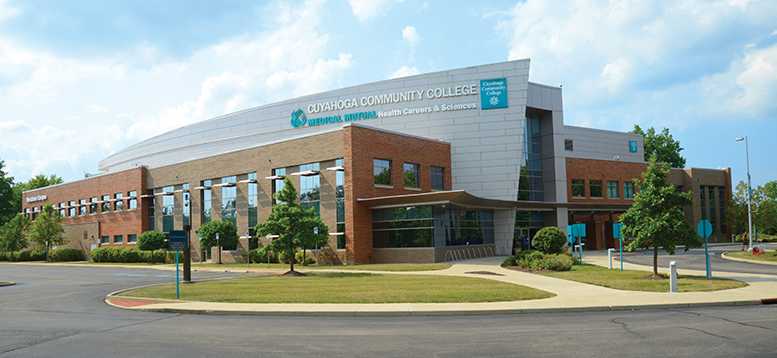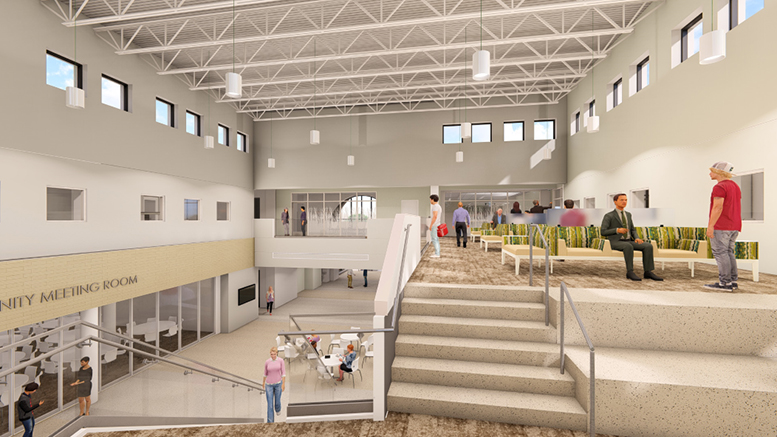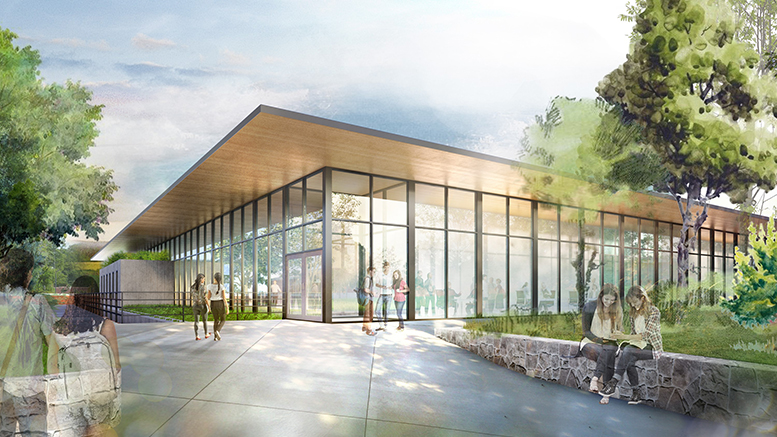Seven-figure grants to community colleges were once a rarity. Not anymore.
Funders across the spectrum — from alumni and other community members, to foundations and corporations — are increasingly recognizing the value of community colleges, and colleges themselves are increasingly aware of — and going after — the opportunities.
Doing this successfully requires synergy between the college and its fundraising arm to ensure that strategic plans are well-developed and that the fundraising effort aligns with those plans, says Marc Westenburg, director of the Center for Community College Advancement (CASE).
“That relationship is integral to fundraising success and catapults community colleges to maximize their potential in fundraising,” he says. “If you expend a lot of institutional resources chasing after grants because there are dollars attached to them, without having a strategic purpose, without recognizing or exploring sustainability, that can definitely affect what your overall success is going to look like.”
Community colleges need to keep track of fundraising trends, both at the federal level and among private funders, Westenburg says.
“That’s so they’re able to embark in the right direction,” he says. “You need to have a clear focus and strategic plan, and rely on excellent data collection first and foremost. With competitive grants, you need to be able to demonstrate the need via data.”
Strategic planning allows colleges to pounce when there is an opportunity, and abstain from doing so when it doesn’t make sense, Westenburg says.
“Those who are successful are working one to two years in advance, so once those (grant periods) are open, you’re just doing some fine-tuning according to changes in the RFP (request for proposals),” he says. “Although larger grants might be extremely tempting, especially from a leadership perspective, you need to consider the impact, not only the size.”
Health facilities and careers
Fundraising and gift-making have had a major impact at Cuyahoga Community College (Tri-C) in Cleveland, which has seen its endowment more than double from $39 million to $85 million during the past six years, says Tri-C President Alex Johnson, who also is chair of the American Association of Community Colleges’ board of directors.

Cuyahoga Community College’s health careers and sciences building carries Medical Mutual’s name in recognition of its support of the college. (Photo: Tri-C)
Most recently, Cuyahoga received $1 million from MetroHealth to establish a career training center on the hospital’s main campus. Other seven-figure gifts in the past few years have included $1 million from Medical Mutual of Ohio for health career programs, scholarships and a new career center; $10 million from the Jack, Joseph and Morton Mandel Foundation for a humanities center; $1.7 million from KeyBank for scholars and programs for youth, as well as a public safety center of excellence; more than $1 million from Goldman Sachs for business programming; and $1.25 million from the Lerner Foundation to create a veterans’ center.
The MetroHealth grant was a result of a strategic focus on civic engagement and community development in underserved areas, Johnson says. Tri-C already had established Access Centers on the west and east sides of Cleveland to serve as community clinics, and MetroHealth asked the college if it would develop a third such facility at its location. The money will offset the building costs and provide scholarship money.
To date, the partnership has resulted in a few classes being offered, but once they open the Institute for Health, Opportunities, Partnership and Empowerment (HOPE), it also will include training around health career-oriented programs, Johnson says. The leadership of MetroHealth “recognized that those facilities would have to respond to Cleveland’s most-challenging issues regarding poverty and health disparities,” he says. “To be a partner in that kind of community transformation is really humbling.”
A solid foundation and plan
To achieve such success, community colleges need a comprehensive program around fundraising and donor cultivation, Johnson says. Tri-C has a foundation board of about 65 people, many of whom are CEOs or other senior officials in large companies. In addition, the college president needs to serve as the chief fundraising officer, working with the foundation director to communicate the college’s needs to important individuals and foundations.
“The vast majority of our major gifts are not at the million-dollar mark,” Johnson says. “They’re at $300,000 or $500,000. It’s important not to always look for the big gifts, but to work your way up.”
Along the way, colleges need to keep searching for ideas that will resonate, Johnson says. For example, KeyBank was looking to orient youth to job opportunities in areas like fire, police and emergency response.
“KeyBank invested in us the responsibility to direct some of those youth,” he says. “That’s just one example.”
Teacher preparation and woodworking
Cerritos College in Norwalk, California, has received a couple of large gifts in the past 18 months that have taken its endowment from $4 million to $7.3 million. A pair of retired teachers who chose to remain anonymous gave $1 million for scholarships and other support to the teacher track program; and alumnus John B. Smith, Jr., left $2.3 million in his estate to support the college’s acclaimed woodworking program.
The teachers strove to “highlight the value of teacher preparation programs at community colleges,” says Jose Fierro, the college’s president and superintendent. “Given the fact that 60 percent of students who graduate from the CSU (California State University) system as teachers begin in California community colleges, they feel strongly that this is an investment in the future.”
Related story: Endowments are not just for elite universities anymore
Smith, a successful engineer, studied woodworking to augment projects he did in his home woodworking shop, which became a passion as he continued his career as an engineer. Fierro sees it as “one of those classic examples when you see the added value of community colleges,” he says. “(Woodworking) became a very big part of his life. … He had a very soft heart for the woodworking program and what it did for him.”
The gift, which also included a drill press and bandsaw, will go toward students hoping to enter a career in woodworking, helping to offset the costs of not only tuition but also equipment and materials, Fierro says. Some of the money will go toward students who are walking in Smith’s shoes.
“Students may not be woodworking majors, but they are interested in learning woodworking,” he says.
An intentional expansion
The expansion of Cerritos’ endowment came about intentionally, Fierro says. The college invested in the foundation, expanding its staff capacity in number and experience. At the same time, it became more active in the community, working to build a broader array of relationships based on commonalities of interest.
“They cannot be transactional,” Fierro says. “We need to be able to tell our story and build that relationship. We have to invite them to events. We have to build a friendship. … That requires the commitment not just from the foundation, but from the CEO of the organization.”
But everyone on campus plays a role in fundraising, he adds.
“It is virtually impossible for me, or for the executive director of the foundation, to know everyone who could potentially lead to a gift,” Fierro says. “When faculty are engaged, when staff are engaged, when administrators are engaged, we build those relationships in the community, we meet people and we cultivate gifts from that point.”
A new student center
Nearly all student services will come under one roof at Greenville Technical College in South Carolina thanks to a $2 million gift from alumna Dodie Anderson. After receiving her associate degree from Greenville Tech in 1979, Anderson transferred to the University of South Carolina-Spartanburg and eventually co-founded a successful plywood manufacturing company with her husband.
At Greenville Tech, Anderson received encouragement from instructors and a fellow student named Daniel Driesbach — who went on to become the only graduate of a South Carolina technical college named a Rhodes Scholar and is currently a law professor at American University. Anderson’s gift honored that classmate, creating the soon-to-open Driesbach/Anderson Student Success Center.

A rendering of the Dreisbach/Anderson Student Success Center at Greenville Technical College. (Image: GTC)
Until now, admissions, registration, counseling and tutoring have been available in a few different places on campus, says Ann Wright, vice president for advancement at the Greenville Tech Foundation.
“This is to make it a one-stop center, so that the students will have the least amount of work to do in terms of navigating services,” Wright says. “A lot of thought is going into our current structure and processes, and what needs to be changed to fit into that building and that model, with the student as the No. 1 customer.”
The project involves renovating and adding onto an existing building that’s the first one that students encounter upon arriving on campus.
“You can’t miss it,” Wright says. “The building will welcome students, and the services within it will help them get started and succeed.”
Relationships, relationships, relationships
Wright says fundraising centers around building relationships.
“It is about listening to people who would like to do something charitable, and identifying and understanding what their passions are, and then aligning those with the priority needs of the college,” she says. “While this sounds rather simple, it really isn’t. It takes a number of years.”
In Anderson’s case, she adds, “It was knowing her story, and knowing what her passion was in encouraging students to get through and persist. That was so important to her because that was her experience. People did that for her. She was paying it forward.”
Wright echoes other fundraisers in noting that colleges need to resist the temptation to go after financial opportunities if they do not align with strategy and mission.
“They will chase after the money and try to make something fit,” she says. “That leads to mission creep and gets beyond something they are capable of sustaining. The best way is to have a master plan, understand what your priorities are, and then go about sharing those.”
And it’s best for that sharing to be old-school, Wright adds.
“It means being out with these people, talking and listening — not sending an e-mail,” she says. “It really is that face-time.”
Prepping for a new science building
In Massachusetts, students at Cape Cod Community College soon will enjoy fully modernized STEM facilities thanks in part to long-time donor Maureen Wilkens, who contributed $5 million — the college’s largest-ever grant — to a $38 million project that had received $25 million in state funding but needed a capital campaign to produce the rest.
Wilkens, who with her late husband previously established an endowed scholarship for single parents and helped to renovate the college’s nursing lab, made a key contribution that pushed the effort along, says President John Cox.
Set to open in 2022 and similar in size to the existing 1970s-era space, the building “will consolidate and relocate the faculty offices more closely to where the lab space is,” Cox says. “There will be more integrated meeting and gathering spaces for students. It’s built around a lot of natural light getting into the facility.”
Cox, his family and his predecessor met with Wilkens when he first started to ensure the continuity of the relationship.
“She’s seen the success of our students and how the college can be transformational,” Cox says. “She has known about our pursuit of the state investment for the science building. … She’s been very generous and remains committed.”
Nurturing contacts
The cultivation of that relationship over the years underscores the importance of nurturing contacts, Cox says.
“It’s ‘How do you get people into the college to see what’s going on?’” he says. “How do you get that first linchpin moment, and how do you continue to build off of that, so people can understand your mission and see the success. And then when an opportunity comes along … you articulate that to the donor, give them time to consider and help them see the value of a commitment.”

An illustration of the soon-to-be-constructed STEM building at Cape Cod Community College, which received $5 million from a long-time donor. (image: CCCC)
Then, colleges need to take time to properly thank their donors, whether by having students write thank-you letters or inviting them to a ribbon-cutting, Cox says.
“It gives you the opportunity to build off that for the future,” he says. “From time to time, you get the Mrs. Wilkenses of the world, the transformational gift that’s so powerful. But even the smaller gifts, it truly makes a difference. It’s about building that information flow.”

